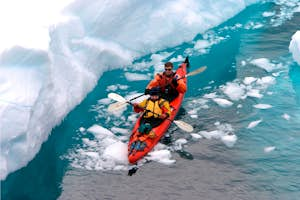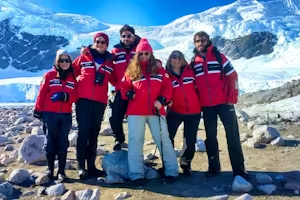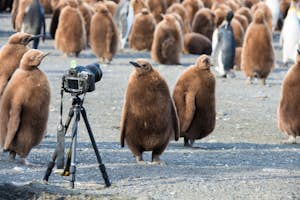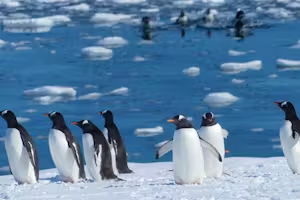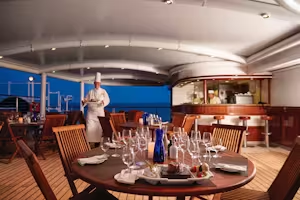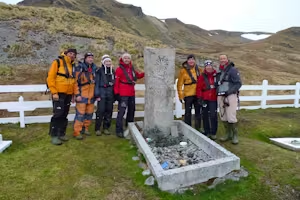The first sighting of Antarctica
It is believed that Fabian Gottlieb von Bellingshausen of the Russian expedition in January 1820 first laid eyes on the icy wilderness - specifically the Fimbul Ice Shelf, as it is now known. Much like the Antarctic Treaty, the early discovery of Antarctica was the work of many nations and individuals who played important roles in its exploration.
Bellinghausen was quickly followed, in fact by a matter of days, by the Royal Navy's Edward Bransfield, and soon after by American sea captain, Nathaniel Palmer. These voyages laid the foundation for the period of 'heroic' discovery which followed in the early 20th century, in which renowned explorers like Scott, Shackleton and Amundsen made names for themselves.
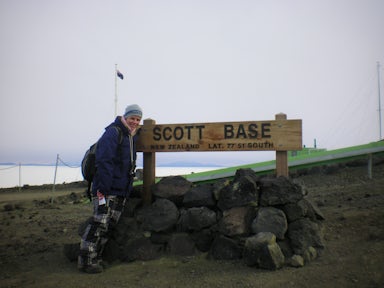
Soaking up the history at Scott Base on Ross Island
The 'heroic era' of exploration
The pioneering exploration of the Antarctic Interior by James Clark Ross and Ernest Shackleton in the early 20th century provided a basis for many of the scientific programs in Antarctica today, most notably around geology, glaciology and the environment.
Discovery of the geographic South Pole was hugely motivational for explorers in the early 1900s due to the prestige it afforded. The race to get there, and be the first to stand atop the ice at the end of the world, was fiercely competitive and strategic. The ultimate victory fell to Norwegian explorer, Roald Amundsen, who arrived five weeks ahead of his rival Robert Scott. Both employed very different tactics to get there, and only one returned safely - Scott perished on the Ross Ice Shelf en route back. Many believe the diets of these two infamous competitors to have been a key factor, and you can read more about this is a fascinating article from Swoop Polar Specialist, John, over at our online magazine, Ends of the Earth.
We've also compiled a list of books and films about Antarctica which really help to bring it to life.

Re-enacting history
In 2013, polar expedition guide and friend of Swoop, Seb Coulthard, took a small wooden boat into an unforgiving sea. Along with five other spirited adventurers, he attempted to follow in the footsteps of the legendary polar explorer, Sir Ernest Shackleton.
In this Ends of the Earth magazine article, John from Swoop sat down to talk to Seb about why, and how, he did it.
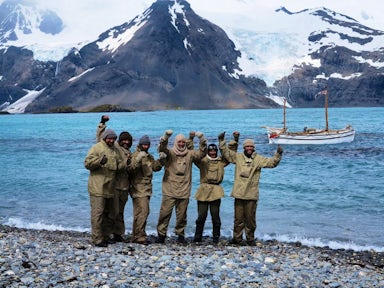

Ben says
What does discovery look like now?
In December 2018, a four-man team set off into the remotest region of Antarctica on a wind-powered sled. Over eight weeks they covered 2,500 km, undertaking scientific research and testing the vehicle to its limits. In this Ends of the Earth magazine article, we spoke to the team leader, Ramón Larramendi, about the experience...
Protecting Antarctica
The Antarctic Treaty & IAATO
In late 2019, we celebrated an important day in the Polar calendar. On Dec 1st 1959, signing of the Antarctic Treaty commenced. The treaty now has 54 parties, keeping Antarctica free from military activity, and supporting scientific studies which protect the environment.
The work of the treaty is supported by IAATO (the International Association of Antarctica Tour Operators) who represent tourism in Antarctica, working with the treaty signatories as an invited expert. Discover more about the essential work they do, and why we're proud to be a member.

Citizen Science & Happy Whale
Antarctica is a critical part of the Earth’s climate system and a sensitive barometer of climate change. By collaborating with tourists through 'Citizen Science' to capture data and track activity, scientists can better understand the effects of global warming on the environment.
Another brilliant way to assist scientists in their work is to log in to the website Happy Whale and upload your whale photos. Scientists can only be in one place at a time, but we can help them track migratory habits and invest in the marine environment of tomorrow.
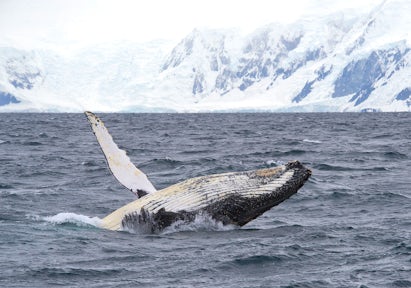
Acrobatic Humpback whale, Wilhelmina Bay



